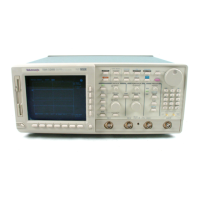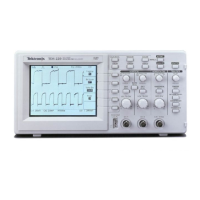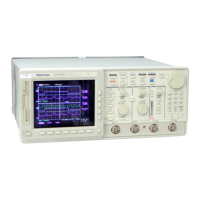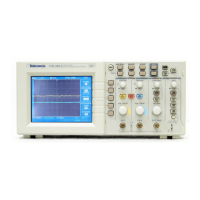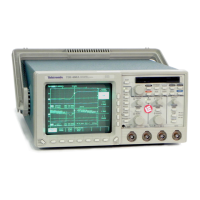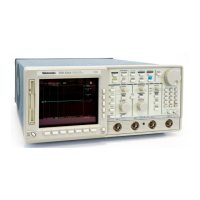Using Features for Advanced Applications
3–150
TDS 500B, TDS 600B, & TDS 700A User Manual
5. Press OK Create Math Wfm (side) to perform the function.
You can also select whether or not you wish to average a certain math waveform;
to do so, perform the following steps:
1. Press MORE ➞ Math1, Math2, or Math3 (main) to select the math
waveform to be averaged.
2. Press Average (side) and enter a value with the general purpose knob or the
keypad. Any math operations you select for the waveform are performed on
an average of multiple acquisitions.
3. To turn off math averaging for the selected math waveform, press No
Extended Processing (side). Any math operations you select for the
waveform are performed on only one acquisition.
Fast Fourier Transforms
The Advanced DSP Math capabilities of the TDS Oscilloscope include taking
the Fast Fourier Transform (FFT) of a waveform. This section describes FFTs
and how to set up the oscilloscope to display and measure FFTs.
The FFT allows you to transform a waveform from a display of its amplitude
against time to one that plots the amplitudes of the various discrete frequencies
the waveform contains. Further, you can also display the phase shifts of those
frequencies. Use FFT math waveforms in the following applications:
Testing impulse response of filters and systems
Measuring harmonic content and distortion in systems
Characterizing the frequency content of DC power supplies
Analyzing vibration
Analyzing harmonics in 50 and 60 cycle lines
Identifying noise sources in digital logic circuits
To Average a Math
Waveform

